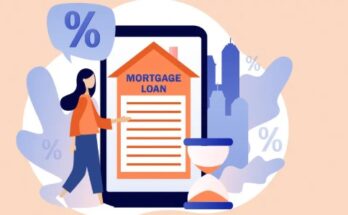Mortgage Myths Explained by freegame24.xyz
Grasping the Basics of Mortgages
For many, the concept of a mortgage can feel overwhelming. A mortgage is a loan used to purchase real estate, where the property itself serves as collateral. The borrower agrees to pay back the loan amount, plus interest, over a specified period, usually 15 to 30 years. This foundational idea is crucial to grasp before diving into the nuances of mortgages, including interest rates, down payments, and the approval process.
Mortgages come in various types, with the most common being fixed-rate and adjustable-rate mortgages (ARMs). In a fixed-rate mortgage, the interest rate remains constant throughout the loan term, providing stability in monthly payments. ARMs, on the other hand, have interest rates that can change based on market conditions after an initial fixed period. This means your monthly payments could fluctuate, potentially rising over time.

Another important aspect of mortgages is the down payment, which is a percentage of the property’s purchase price that the borrower pays upfront. While the traditional benchmark has been 20%, there are numerous loan programs that allow for lower down payments, ranging from 3.5% to even 0% for certain qualified individuals.
The mortgage approval process involves several steps. Initially, borrowers undergo pre-qualification, where they provide an overview of their financial status to get a rough estimate of how much they might borrow. This is followed by pre-approval, where lenders verify financial details and conduct a credit check, resulting in a conditional commitment for a specific loan amount. This step demonstrates to sellers that the buyer is financially prepared.
Credit score, income, employment history, and debt-to-income (DTI) ratio are critical factors that lenders evaluate during the approval process. A higher credit score often secures better loan terms, while the DTI ratio helps assess the borrower’s ability to manage monthly payments. Understanding these factors can aid borrowers in positioning themselves more favorably when applying for a mortgage.
Refinancing is another facet of mortgages worth noting. This involves replacing an existing loan with a new one, usually to obtain a lower interest rate or alter the loan term. While it can save money in the long run, refinancing also comes with its own set of costs and considerations.
Widespread Misunderstandings About Mortgage Interest Rates
Interest rates are often discussed when it comes to mortgages, but their determination is frequently misunderstood. They are influenced by factors such as the Federal Reserve’s benchmark rates, inflation, and general economic conditions. However, personal factors like credit score and loan amount can also affect the rate offered by lenders.
One common misunderstanding involves the difference between fixed and variable rates. Fixed-rate mortgages lock in the interest rate for the entire loan term, providing predictability in monthly payments. On the other hand, variable or adjustable-rate mortgages (ARMs) offer a lower initial rate that can change over time based on market conditions. While ARMs can be appealing with their lower initial costs, they carry the potential for increased rates in the future, which can be a surprise for some borrowers.
Another area of confusion is the impact of credit scores on mortgage interest rates. Many borrowers don’t realize that a higher credit score can result in more favorable interest rates. Conversely, a lower credit score can lead to higher rates, which means higher monthly payments over the life of the loan.
Loan amount and loan-to-value (LTV) ratio also play significant roles. The LTV ratio measures the loan amount against the property’s value. A higher LTV ratio often means a higher interest rate because the loan is considered riskier for the lender. Conversely, a lower LTV ratio can lead to a lower interest rate.
Economic indicators and market trends can also influence rates. For example, in times of economic growth, interest rates may rise to curb inflation. Conversely, during economic downturns, rates might be lowered to encourage borrowing and spending.
Finally, many borrowers misunderstand the role of mortgage points, which are fees paid upfront to reduce the interest rate. Paying points can lead to lower monthly payments, but it requires an initial investment. It’s essential to calculate whether the long-term savings justify the upfront cost.
Understanding how mortgage interest rates are determined and the factors influencing them can help borrowers make better financial decisions when applying for a mortgage.
Myths About Down Payments
A common misconception in the mortgage landscape is the belief that a 20% down payment is mandatory. While it’s true that a larger down payment can lower your monthly payments and potentially eliminate the need for private mortgage insurance (PMI), many prospective homeowners are unaware that there are loan options requiring much smaller down payments. For example, FHA loans are available with as little as 3.5% down, making homeownership more accessible for those who may not have substantial savings.
VA loans, available to veterans and active-duty military personnel, can offer 0% down payments, removing a significant barrier for those who qualify. Similarly, USDA loans provide zero down payment options for properties in designated rural areas, promoting homeownership in less densely populated regions. These programs highlight the variety of paths to homeownership beyond the traditional 20% down payment.
Some believe that a smaller down payment may negatively impact their ability to secure a mortgage. While a larger down payment can make a borrower more attractive to lenders, other factors like credit score, income, and employment history play critical roles in the approval process. Therefore, even with a lower down payment, a strong financial profile can still lead to favorable mortgage terms.
Another myth is that low down payment options are only for first-time homebuyers. In reality, many of these programs are available to repeat buyers as well, provided they meet the specific qualifications set forth by the lender or the loan program. This flexibility allows a broader range of individuals to benefit from these opportunities, whether they are purchasing their first home or moving to a new one.
Lastly, some potential homeowners worry that lower down payments automatically lead to higher interest rates and increased monthly payments. While it’s possible that a smaller down payment could result in a slightly higher interest rate, this is not always the case. Each loan program has its own set of guidelines and criteria, which means borrowers can still find competitive rates even with a lower down payment.
Misconceptions About Mortgage Approval
One common misconception is that only those with perfect credit scores can secure a mortgage. While a high credit score can indeed lead to better loan terms, lenders consider various factors when evaluating mortgage applications. These include income, employment history, and overall financial stability. Even those with less-than-perfect credit can often qualify for a mortgage, although they might face higher interest rates or require additional documentation.

Another area where confusion arises is the importance of a steady income. Many prospective borrowers worry that if they’ve recently changed jobs or have a varied income history, they won’t qualify for a mortgage. However, lenders typically look for consistent income over time rather than penalizing applicants for job changes, especially if they are in the same industry or have moved to a higher-paying position. Self-employed individuals and freelancers can also qualify for mortgages, though they might need to provide more comprehensive documentation of their income.
Many people also believe that significant existing debt automatically disqualifies them from mortgage approval. While existing debt is a consideration, lenders primarily focus on the debt-to-income (DTI) ratio. This ratio compares monthly debt payments to monthly income. Even if you have existing debt, a manageable DTI ratio can still make you an attractive candidate for a mortgage. Different loan programs have varying DTI requirements, so it’s possible to qualify even with higher ratios.
Additionally, some borrowers think that only first-time homebuyers can benefit from certain loan programs. While programs like FHA and VA loans are often associated with first-time buyers, they are also available to repeat buyers under certain conditions. This means that even if you have owned a home before, you might still qualify for programs offering lower down payments and competitive interest rates.
Lastly, there is a myth that getting pre-qualified is equivalent to being approved for a mortgage. Pre-qualification provides an estimate based on self-reported financial information, while pre-approval involves a thorough evaluation by the lender. Understanding the difference can help borrowers better prepare for the home-buying process and avoid unexpected hurdles.
Pre-Qualification vs. Pre-Approval
Pre-qualification and pre-approval are often used interchangeably, but they are distinct steps in the mortgage process, each serving a unique purpose.
Pre-qualification is a relatively quick and informal process where the borrower provides basic financial information, such as income, assets, and debt. Based on this self-reported data, the lender offers an initial estimate of the loan amount for which the borrower might qualify. This step gives potential buyers a general idea of their purchasing power but does not guarantee loan approval.
Pre-approval, however, is a more thorough process. The borrower must submit comprehensive financial documentation, including tax returns, pay stubs, and bank statements. The lender will also conduct a credit check to assess the borrower’s creditworthiness. This detailed evaluation results in a conditional commitment for a specific loan amount, providing a clearer and more reliable indication of the borrower’s financing capabilities.
While pre-qualification can be helpful for initial planning and setting a budget, pre-approval is often essential when seriously shopping for a home. Sellers and real estate agents typically view pre-approved buyers as more credible and prepared, which can be advantageous in competitive markets. Pre-approval letters show that the lender has verified the borrower’s financial information and is willing to extend a loan, subject to final property approval and other conditions.
Additionally, pre-approval can speed up the home-buying process. With financial documentation already reviewed, borrowers can move more quickly to closing once they have an accepted offer. This can be particularly beneficial in fast-paced real estate markets where time is of the essence.
It’s worth noting that the pre-approval process can uncover potential issues early on, giving borrowers time to address any financial discrepancies or credit problems before they commit to purchasing a home. By identifying these issues in advance, borrowers can take steps to improve their financial standing, potentially securing better loan terms in the process.
Understanding the distinctions between pre-qualification and pre-approval helps borrowers navigate the mortgage process more effectively, ensuring they are well-prepared when making offers on their desired properties.



